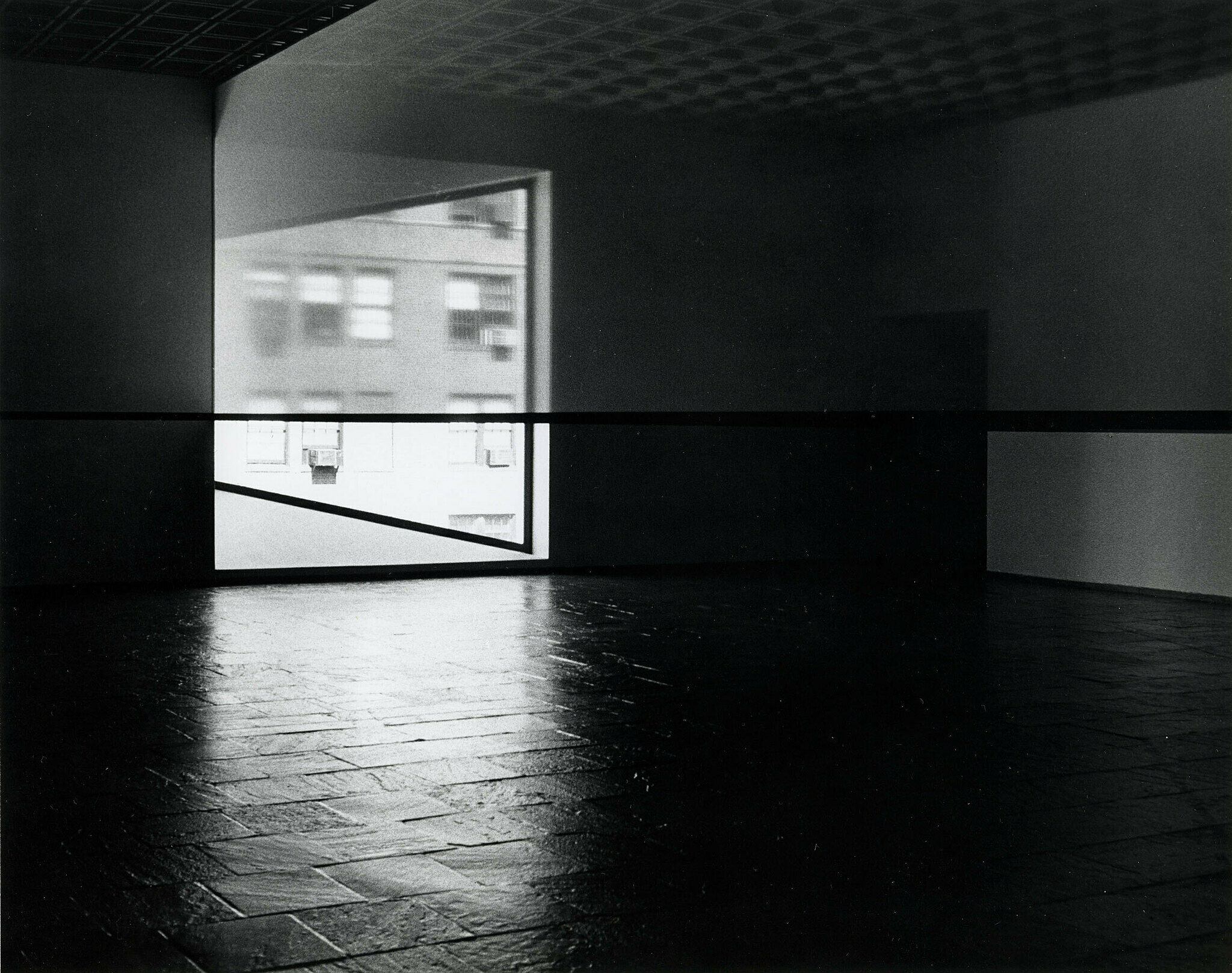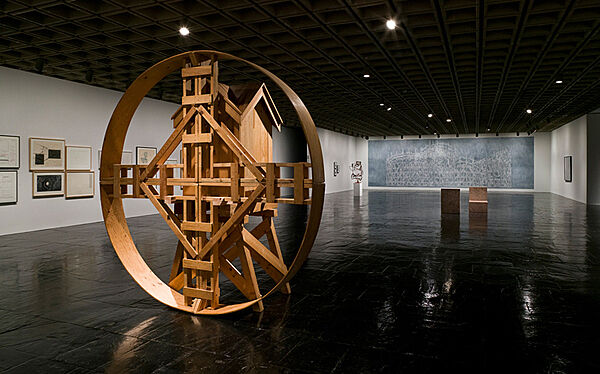Robert Irwin
1928–2023
In the 1960s Robert Irwin set about creating works of art that explored the physical experience of looking. Like many of his Los Angeles peers in what came to be known as the Light and Space movement, he had become increasingly interested in optical effects and the mechanics of perception as well as in the use of industrial and technological processes as a means to investigate these phenomena. Irwin’s series of untitled “disc” works, begun in 1966, continued the project of his earlier perceptual “dot” paintings. Both series represented a radical desire to “eliminate imagery in favor of physicality” and an attempt to escape the limitations set by the rectangular frame of painting.
In this untitled work, a circular, convex aluminum disc, sprayed with matte acrylic paint in barely perceptible concentric rings and attached to an armature, appears to hover in space about twenty inches from the wall. Four precisely positioned spotlights cast circular, overlapping shadows that expand the area of the work by appearing to dissolve the boundary between the disc and the wall behind it. “The key,” Irwin explained, “was for the edge to become lost in its own shadows.” In effect, the wall becomes part of the work, which in turn “does not begin and end at an edge but rather starts to take in and become involved with the space or environment around it.” Irwin’s interest in expanding the parameters of the artwork through perceptual and sensory experiments would continue to develop with environmental installations that employ natural light filtered through delicate fabric scrims and what he has called “site-conditioned” landscape works.
Introduction
Robert Walter Irwin (September 12, 1928 – October 25, 2023) was an American installation artist who explored perception and the conditional in art, often through site-specific, architectural interventions that alter the physical, sensory and temporal experience of space.
Irwin began his career as a painter in the 1950s, but in the 1960s shifted to installation work, becoming a pioneer whose work helped to define the aesthetics and conceptual issues of the West Coast Light and Space movement. His early works often employed light and veils of scrim to transform gallery and museum spaces, but from 1975 until his death, he also incorporated landscape projects into his practice. Irwin conceived over fifty-five site-specific projects, at institutions including the Getty Center (1992–98), Dia:Beacon (1999–2003), and the Chinati Foundation in Marfa, Texas (2001–16). The Museum of Contemporary Art, Los Angeles mounted the first retrospective of his work in 1993; in 2008, the Museum of Contemporary Art San Diego presented another, spanning fifty years of his career. Irwin received a Guggenheim Fellowship in 1976, a MacArthur Fellowship in March 1984, and was elected as a member of the American Academy of Arts and Letters in 2007. He lived and worked in San Diego, California.
Wikidata identifier
Q7345814
Information from Wikipedia, made available under the Creative Commons Attribution-ShareAlike License . Accessed December 22, 2025.
Introduction
Southern California artist associated with the Light and Space movement of the 1960s, who early in his career ceased making paintings in favor of ephemeral and sometimes intangible art environments, acting as master planner for the Dia Foundation's building in the Hudson River city of Beacon, and the central garden of the Getty Center, Los Angeles.
Country of birth
United States
Roles
Artist, environmental artist, installation artist, painter, sculptor
ULAN identifier
500022899
Names
Robert Irwin, Bob Irwin
Information from the Getty Research Institute's Union List of Artist Names ® (ULAN), made available under the ODC Attribution License. Accessed December 22, 2025.



